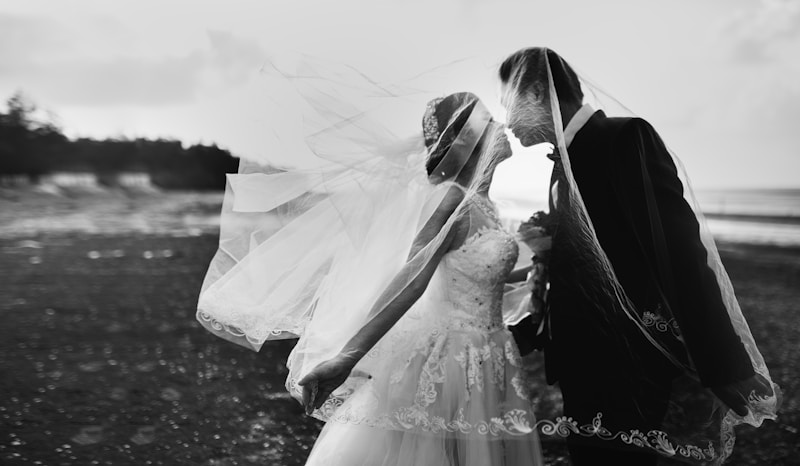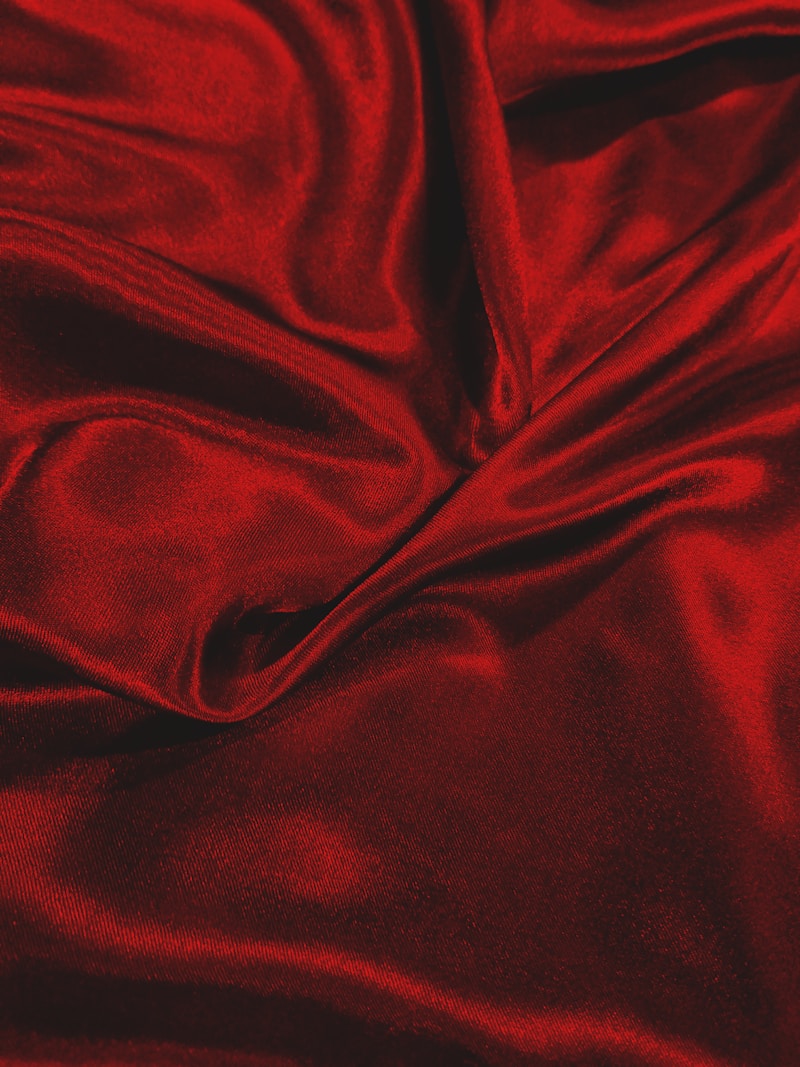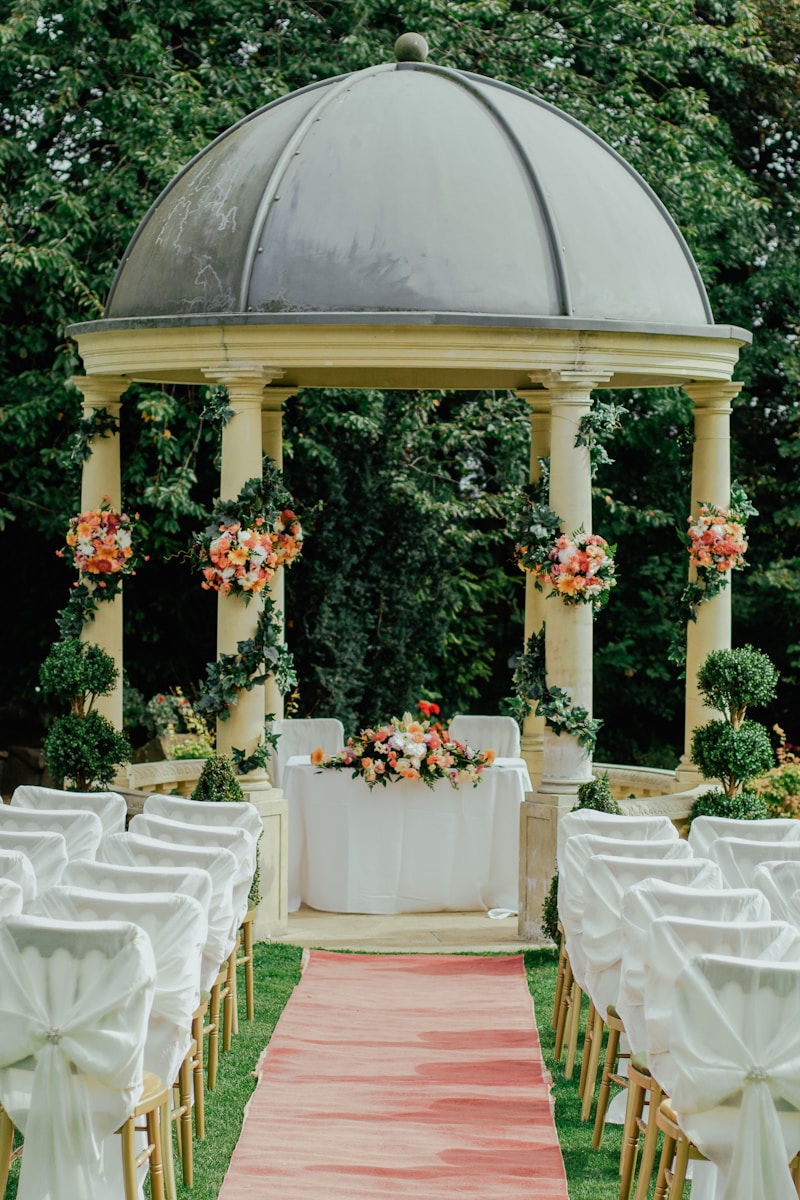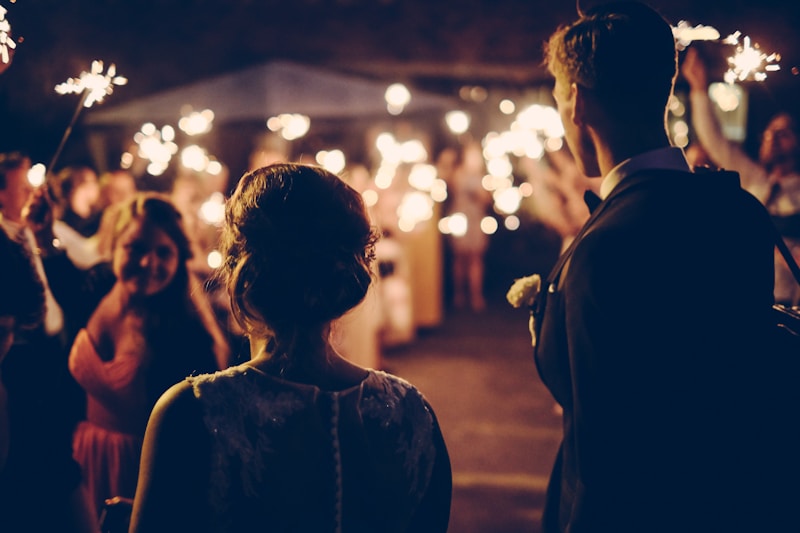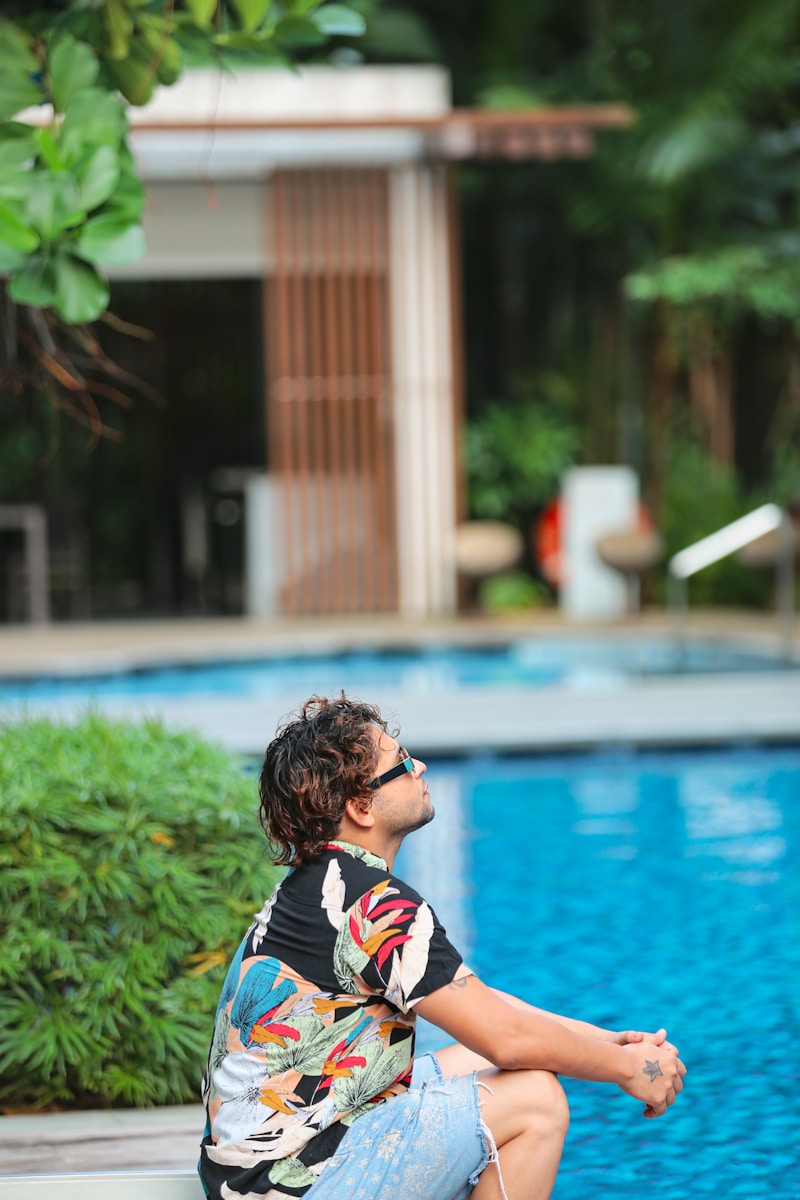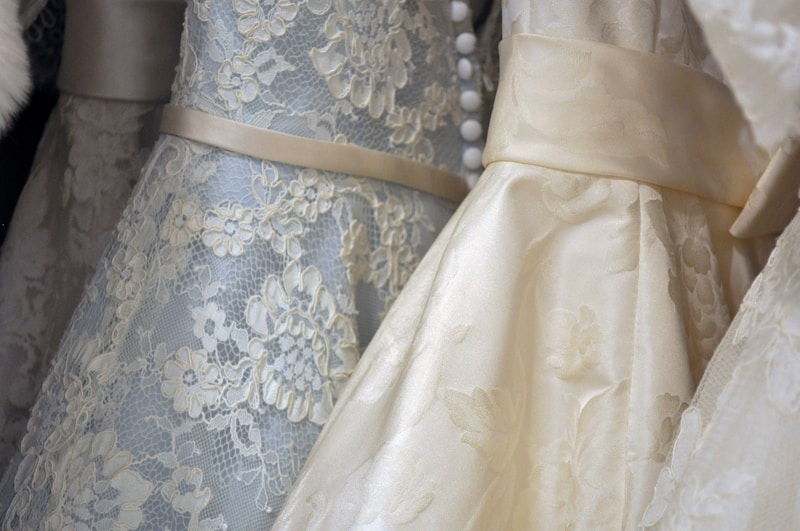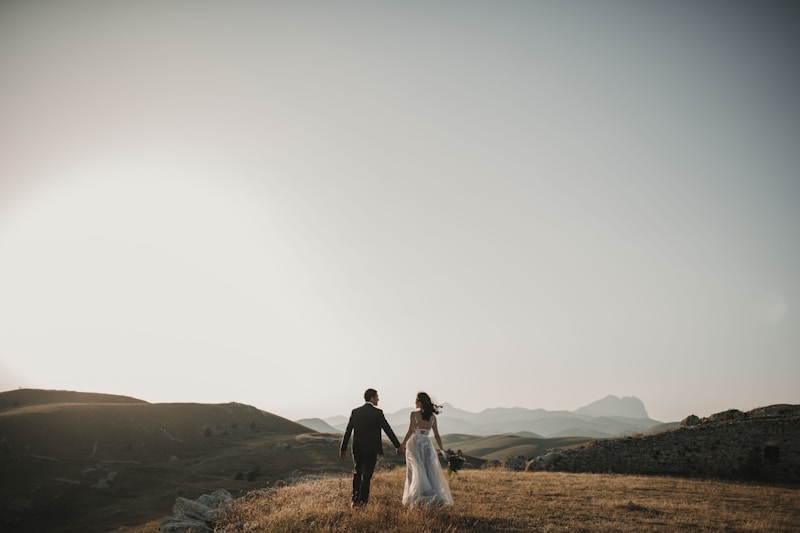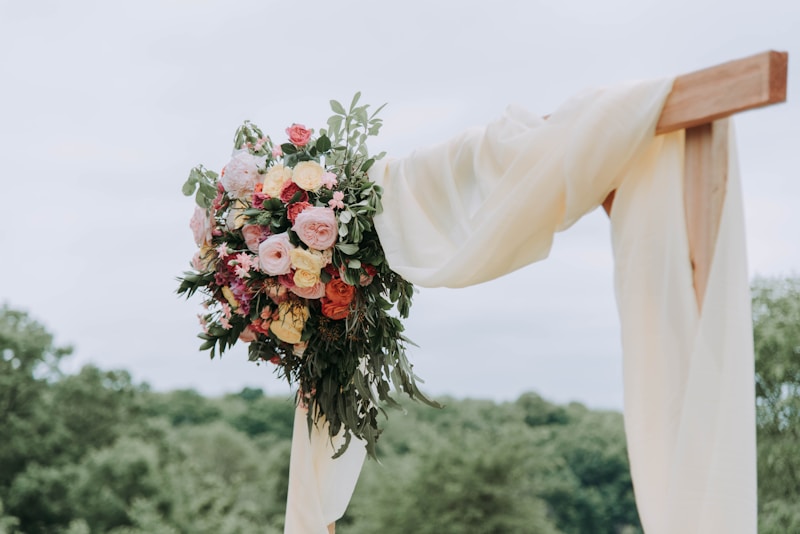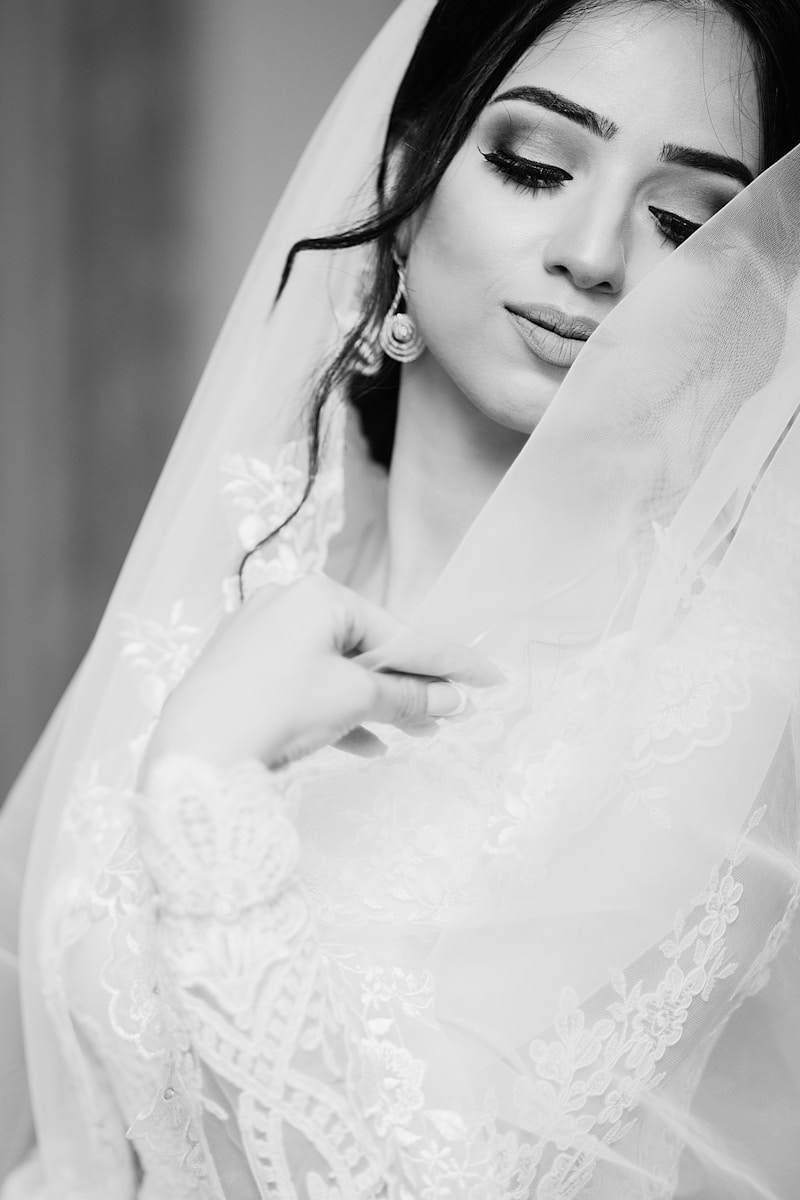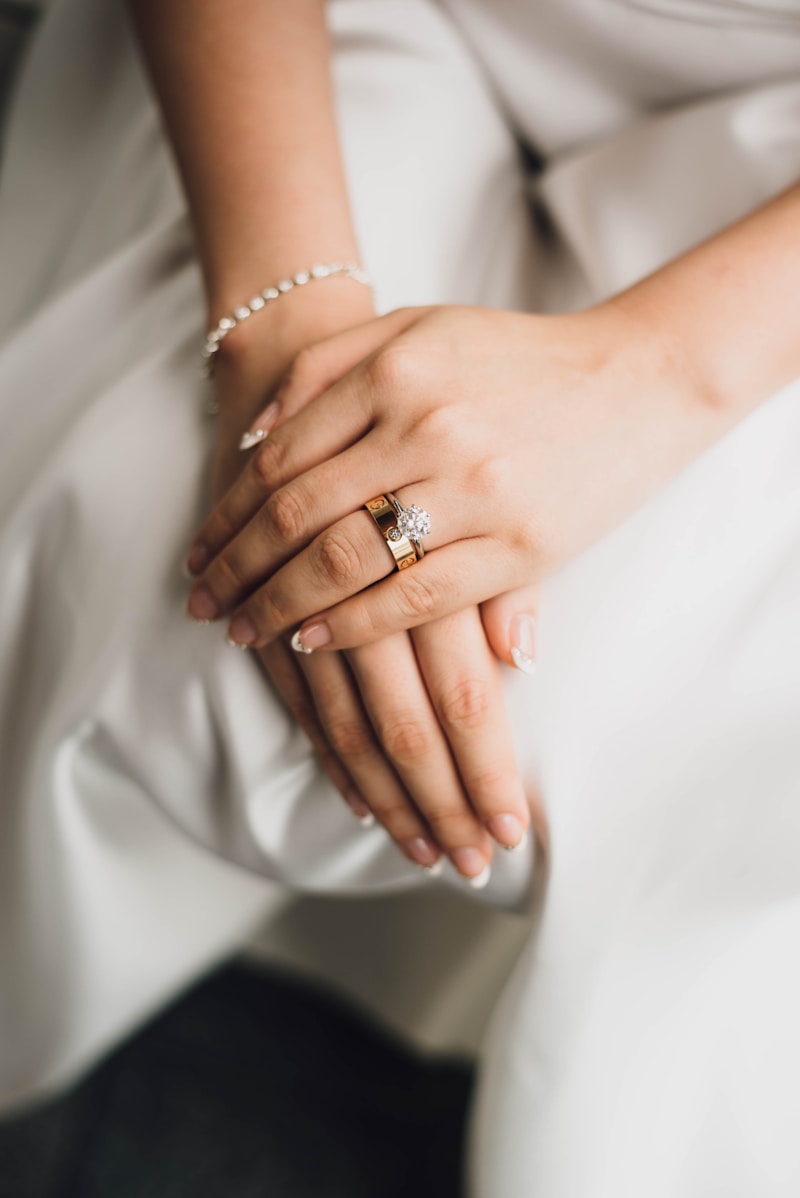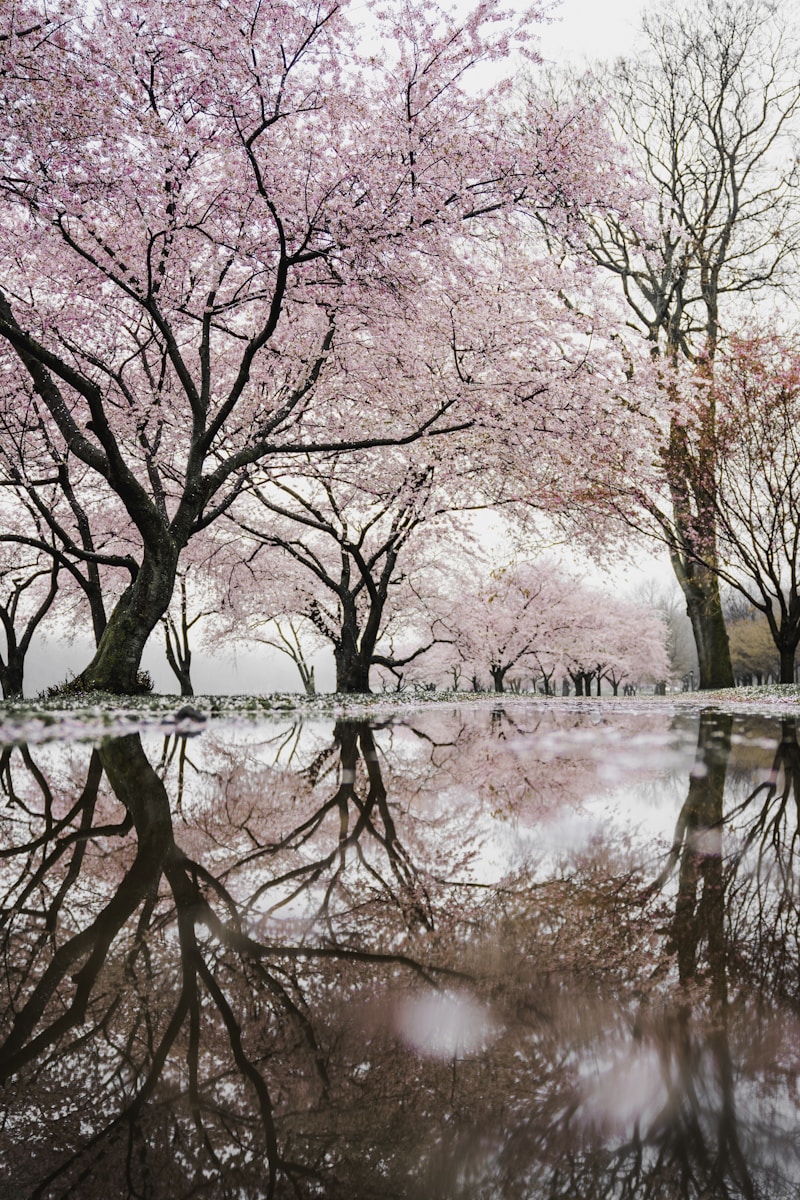Choosing the Right Material for Your Wedding Dress: A Comprehensive Guide
Your wedding day is one of the most memorable moments in your life, and choosing the right wedding dress is crucial to making it unforgettable. One of the most vital aspects of selecting a wedding dress is determining the right material. In this guide, we will explore various fabrics used in wedding dresses, helping you make an informed decision that reflects your personality and style.Understanding Wedding Dress MaterialsWedding dresses come in various materials, each offering unique advantages and aesthetics. Understanding these materials will help you select the one that best suits your body type, wedding theme, and personal taste. Here are some popular materials used in wedding dresses:MaterialCharacteristicsBest ForSilkLuxurious, smooth, and timelessFormal weddings, elegant designsChiffonLightweight, flowing, and softOutdoor weddings, bohemian stylesLaceIntricate patterns, romantic feelVintage-inspired designs, classic themesSatinGlossy finish, drapes wellStructured dresses, modern weddingsTulleDelicate and airy, often layeredBallerina skirts, playful designs1. Silk: The Epitome of LuxurySilk is a classic wedding dress material known for its luxurious appearance and feel. It drapes beautifully, which enhances the silhouette of the dress. With a variety of finishes, such as silk satin, silk chiffon, and silk organza, silk can be used for both structured and flowing designs. However, silk is more expensive and requires careful handling and cleaning.2. Chiffon: Perfect for ...
Understanding Different Fabrics for Bridal Gowns: A Comprehensive Guide
The Importance of Fabric Selection in Bridal GownsBridal gowns hold a special place in a bride's heart, transcending beyond just a piece of clothing. The fabric of the gown plays a pivotal role in determining the overall look, feel, and comfort of the dress. As brides embark on their journey to find the perfect gown, understanding different fabrics available is essential. This guide will delve into various fabric types for bridal gowns, their unique characteristics, and how they can impact the overall aesthetic.Common Fabrics Used in Bridal GownsWhen it comes to bridal gowns, several fabrics are commonly used, each bringing its own charm and characteristics to the table. Here are some of the most popular options:Fabric TypeCharacteristicsIdeal ForSatinLuxurious, smooth finish; has a slight sheen.Classic, elegant designs.ChiffonLightweight, flowing, and sheer; perfect for layering.Soft, romantic styles.LaceTextured, intricate patterns; adds vintage appeal.Bohemian, vintage-inspired gowns.OrganzaStiff, lightweight; adds structure while remaining sheer.Structured, voluminous dresses.TulleSoft, net-like fabric; often used for layering and skirts.Ball gowns or fairy-tale style dresses.SilkSoft, luxurious, and breathable; feels great against the skin.High-end, sophisticated designs.A Closer Look at Each FabricSatinSatin is one of the most popular choices for bridal gowns due to its luxurious feel and elegant appearance. This fabric has a glossy surface that spectacularly reflects l...
How Fabric Influences the Style of Your Wedding Dress
The Essential Role of Fabric in Wedding Dress DesignChoosing the perfect wedding dress is a monumental task for any bride. One crucial aspect that significantly influences not only the aesthetic appeal but also the overall feel and style of the dress is the fabric used. Different fabrics contribute unique textures, weights, and drapes that can articulate various themes and moods for the wedding. This article will explore how fabric influences the style of your wedding dress, along with tips on selecting the right material for your big day.Understanding Different Fabrics Used in Wedding DressesWedding dresses can be crafted from various fabrics, each possessing distinct characteristics. Here are some common fabrics used in bridal wear:FabricCharacteristicsBest Suited ForSatinLuxurious, smooth, and shiny with a slight weight.Formal weddings and ball gowns.LaceDelicate, intricate designs, often with floral patterns.Romantic and vintage-themed weddings.TulleLightweight, sheer, and voluminous.A-line or princess-style dresses.ChiffonSoft, flowy, and translucent.Beach or destination weddings.OrganzaLightweight and crisp with a slightly glossy finish.Structured designs and layering.How Fabric Affects the SilhouetteThe silhouette of your wedding dress is one of the most critical elements contributing to its overall style. The fabric you choose can either enhance or detract from your desired silhouette. For example, a ball gown silhouette often requires a heavier fabric like satin or t...
Exploring the Pros and Cons of Common Wedding Dress Fabrics
Understanding Wedding Dress FabricsChoosing the right fabric for your wedding dress is one of the most crucial decisions you'll make during the planning process. The fabric not only impacts the overall aesthetic but also affects the comfort, drape, and longevity of your dress. In this article, we will delve into the pros and cons of common wedding dress fabrics, helping you make an informed choice that complements your personal style and wedding theme.Common Wedding Dress FabricsWedding dresses are available in a variety of fabrics, each offering unique qualities. Below are some of the most popular wedding dress fabrics along with their benefits and drawbacks:FabricProsConsChiffonLightweight, flowy, and romantic appearance.Can be difficult to tailor and may wrinkle easily.SatinLuxurious look with a glossy finish, comes in various weights.Can be heavy and may cling to your body, revealing imperfections.LaceClassic and elegant, adds intricate detailing.Can be scratchy and may require special care.TulleLight and airy, perfect for a fairy-tale look.Can be itchy and difficult to clean.OrganzaSheer and crisp, gives a structured silhouette.Can be stiff and accentuate unwanted curves.Chiffon: The Ethereal ChoiceChiffon is a lightweight fabric that drapes beautifully, making it an excellent choice for a romantic and ethereal wedding dress. Its airy quality allows for elegant movement, which is perfect for a spring or summer wedding. However, chiffon can be challenging to sew and may w...
Choosing Eco-Friendly Fabrics for Your Bridal Look: A Complete Guide to Sustainable Fashion
Embrace Sustainability with Eco-Friendly Fabrics for Your Wedding DressEvery bride dreams of looking stunning on her special day, but there's a growing trend in the bridal industry that aims to make this day not only beautiful but also environmentally conscious. Choosing eco-friendly fabrics for your bridal look is a significant step towards sustainability in fashion. In this article, we will explore various eco-friendly fabric options, how they can enhance your wedding gown, and tips for selecting the perfect sustainable bridal attire.Why Choose Eco-Friendly Fabrics?As society becomes more aware of environmental issues, many brides are seeking ways to incorporate sustainability into their weddings. Here are some reasons why choosing eco-friendly fabrics for your bridal look is a wise choice: Environmental Impact: Eco-friendly fabrics often use less water and energy, and they typically avoid harmful chemicals during production, reducing pollution. Biodegradable Options: Many sustainable fabrics are biodegradable, meaning they will break down naturally after their useful life, thereby minimizing landfill contributions. Support for Ethical Practices: By choosing eco-friendly fabrics, brides can support manufacturers who prioritize ethical labor practices. Unique Styles: Eco-friendly fabrics often come in unique designs and textures, allowing brides to express their individuality.Popular Eco-Friendly Fabric Choices for Bridal WearWhen selecting eco-friendly fabrics f...
The Impact of Fabric on Wedding Dress Comfort
Understanding the Importance of Fabric in Wedding Dress ComfortWhen it comes to selecting the perfect wedding dress, many brides focus on design, style, and the color palette, but one of the most critical factors that can significantly affect a bride's comfort on her big day is the fabric used in the dress. In this article, we will explore the impact of fabric on wedding dress comfort, providing insights to help brides make informed choices that enhance their overall wedding experience.Different Fabrics Used in Wedding DressesWedding dresses can be made from a variety of fabrics, each offering unique qualities that can affect comfort. Here’s a breakdown of some popular fabrics:FabricCharacteristicsComfort LevelSatinSmooth, glossy surface; medium weightModerate comfort; can be hot in warm weatherChiffonLightweight, sheer; flows beautifullyHighly comfortable; breathableLaceTextured, intricate designs; often layeredVaries; can be scratchy if not linedTaffetaCrisp, structured; often used for ball gownsHigh discomfort for extended wear; can be heavySilkLuxurious, soft; wonderful drapeHigh comfort; very breathable and hypoallergenicHow Fabric Influences Comfort1. BreathabilityOne of the main attributes that influence comfort in wedding dresses is breathability. Fabrics like chiffon and silk allow air to circulate, keeping brides cooler during warmer ceremonies or receptions. This is particularly beneficial for weddings held during summer months or in warmer climates.2. Weight of th...
Exploring Unique Fabric Options for Alternative Brides
IntroductionIn recent years, the world of bridal fashion has evolved dramatically, breaking away from traditional norms. Alternative brides are redefining what it means to look stunning on their big day, not just through unconventional dress styles but also with unique fabric choices. This article explores some of the most distinctive fabric options available for those who want to express their individuality, comfort, and personal style on their wedding day.The Rise of Alternative BridesThe rise of alternative brides can be traced back to the growing acceptance of diverse expressions of love and identity. Today's couples are less inclined to adhere to traditional wedding conventions, seeking instead to celebrate their unique stories and personalities. This shift has resulted in a demand for fabric options that reflect non-traditional aesthetics. From bohemian vibes to vintage charm and minimalist elegance, alternative brides are breaking the mold. In addition to unique designs, the choice of fabric plays a pivotal role in creating a memorable look that aligns with their personalities.Unique Fabric Options1. VelvetVelvet is making a grand comeback in the bridal fashion world. Its soft texture, opulent appearance, and range of colors make it an ideal choice for alternative brides. Velvet can transform a classic silhouette into something more intriguing, particularly when used for dresses, capes, or even accessories. It drapes beautifully and is perfect for a winter or autumn we...
How to Care for Different Wedding Dress Fabrics: A Comprehensive Guide
Understanding Wedding Dress FabricsYour wedding dress is not just a piece of clothing; it is a symbol of love and commitment. As such, it deserves the utmost care, especially regarding its fabric. Different materials call for different care methods. In this guide, we will dive into how to care for different wedding dress fabrics, ensuring your gown remains pristine for your big day and beyond.Common Wedding Dress FabricsWedding dresses can be made from a wide variety of fabrics, each with unique characteristics. Here are some of the most common fabrics used in wedding gowns:FabricCharacteristicsCare InstructionsSatinSmooth, luxurious, and often slightly shiny.Dry clean only; avoid hanging to prevent stretching.LaceDelicate, often intricate designs; can be cotton, polyester, or silk.Spot clean with a damp cloth; dry clean is recommended for heavily soiled areas.TulleLightweight, net-like fabric that's often used for overlays.Hand wash gently in cold water; drip dry away from direct sunlight.ChiffonSoft, sheer fabric that drapes beautifully.Dry clean preferred; if hand washing, use cold water and mild detergent.OrganzaLightweight, crisp fabric often used for overlays or skirts.Dry clean only; steam to remove wrinkles.SilkLuxurious and smooth, available in various weaves.Dry clean only; do not expose to direct sunlight to prevent fading.Care Tips Based on Fabric TypeSatinSatin wedding dresses are famously elegant and comfortable but can be prone to snagging and mark. The best ca...
Ultimate Guide to Color and Fabric Combinations for Your Wedding Dress
Understanding the Importance of Color and Fabric in Wedding DressesYour wedding day is one of the most significant events in your life, and your dress plays a crucial role in that special moment. Selecting the perfect color and fabric combinations for your wedding dress can enhance your beauty and make your day even more memorable. In this comprehensive guide, we will explore various color options, fabric choices, and combinations that can elevate your wedding dress style.Why Color Matters in Your Wedding DressColor can profoundly influence the mood and ambiance of your wedding. Traditionally, white has been the predominant choice for brides. However, modern weddings have opened the door to a spectrum of color options. When selecting a color for your wedding dress, consider the following: **Skin Tone:** Colors that complement your complexion will enhance your overall appearance. **Theme of the Wedding:** The color of your dress should align with the theme of your wedding, whether it's rustic, vintage, or modern. **Seasonality:** Certain colors are more suited to specific seasons—think pastels for spring and deep hues for fall.Popular Colors for Wedding DressesLet’s delve into some popular color choices for wedding dresses: Color Description White A classic, timeless choice symbolizing purity. Ivory Soft and warm, ivory adds elegance while complementing many skin tones. Bling Blue Bold...
Textures in Wedding Dress Fabrics: What to Consider
Understanding Textures in Wedding Dress FabricsWhen it comes to selecting a wedding dress, the texture of the fabric can transform a gown from ordinary to extraordinary. The right texture not only complements the bride's body shape but also enhances the overall aesthetic appeal of the dress. This article delves into the various textures in wedding dress fabrics and highlights key considerations that brides should keep in mind during their selection process.The Importance of Fabric TextureThe texture of your wedding dress fabric plays a significant role in how the dress fits, moves, and photographs. Some textures are soft and flowing, while others are structured and heavy. Depending on the wedding theme, venue, and personal style, the choice of texture can greatly influence the appearance and comfort of the dress on your special day.Key Textures to ConsiderHere are some of the most popular textures found in wedding dress fabrics:TextureCharacteristicsSilkLuxurious, smooth, and lightweightSatinGlossy, with a reflective surface, often heavierTulleLight, airy, and can add volumeLaceIntricate patterns, delicate and romanticChiffonSoft, sheer, and flowing, great for layered designsOrganzaStiff yet light, often used for structured silhouettesVelvetRich, soft, and warm for a more luxurious appearanceFactors to Consider When Choosing Fabric TexturesChoosing the right texture for your wedding dress is not just about aesthetics; several factors should be taken into consideration:1. Wedd...
Navigating Sheer vs. Opaque Fabrics for Bridal Styles: The Ultimate Guide
Understanding Sheer and Opaque Fabrics for Bridal FashionChoosing the perfect wedding dress is one of the most crucial aspects of preparing for your big day. Among various factors, the fabric selection plays a vital role in defining the bridal style. In this article, we will explore the differences between sheer and opaque fabrics, guide you on how to navigate these options effectively, and help you make an informed decision.What Are Sheer and Opaque Fabrics?Before diving deeper, it's essential to understand what sheer and opaque fabrics are. Sheer fabrics are lightweight and translucent, allowing light to pass through them. Common examples include chiffon and organza. On the other hand, opaque fabrics are heavier and do not allow light to penetrate, such as satin and taffeta.Sheer Fabrics Chiffon: A soft, flowing fabric that creates an ethereal look ideal for layered gowns. Organza: Stiffer than chiffon, organza adds volume and structure to bridal styles. Lace: Often used as an overlay, lace can be sheer, offering intricate designs and patterns.Opaque Fabrics Satin: Known for its luxurious sheen, satin offers a classic and timeless look. Taffeta: This crisp and structured fabric provides a formal appearance, perfect for a glamorous wedding. Crepe: Made from silk or polyester, crepe has a slightly textured surface and beautiful drape.Comparing Sheer vs. Opaque FabricsFeatureSheer FabricsOpaque FabricsTransparencyHighLowDrapeLight and flowingStructured and he...
Seasonal Considerations for Wedding Dress Fabrics: Choosing the Perfect Material for Your Big Day
When it comes to planning a wedding, one of the most significant decisions you'll make is choosing the perfect wedding dress. Among the myriad of choices, selecting the right fabric is crucial. This decision impacts not only the aesthetic of the dress but also its comfort and practicality, especially considering the season of your wedding. In this article, we’ll explore the seasonal considerations for wedding dress fabrics, helping you make an informed choice that aligns with your vision for your special day.The Importance of Fabric Choice in Wedding DressesThe fabric you choose for your wedding dress influences more than just the look. Different fabrics come with varying degrees of breathability, weight, durability, and drape. Understanding the characteristics of each fabric type will help you determine which is best suited for the season in which you are getting married.Understanding Seasonal FabricsDifferent seasons call for different fabrics. Let’s delve into what materials are best suited for each time of year.SeasonRecommended FabricsReasonsSpringChiffon, Tulle, OrganzaLightweight and breathable, perfect for unpredictable weather.SummerLinen, Cotton, Lightweight SilkCool and comfortable, ideal for warm temperatures.FallSatin, Mikado, VelvetRich textures and heavier fabrics complement the autumn aesthetic.WinterTaffeta, Brocade, Heavier SilkInsulating and luxurious, suitable for colder climates.Spring Weddings: Embrace LightnessSpring is a magical time for weddings, char...
